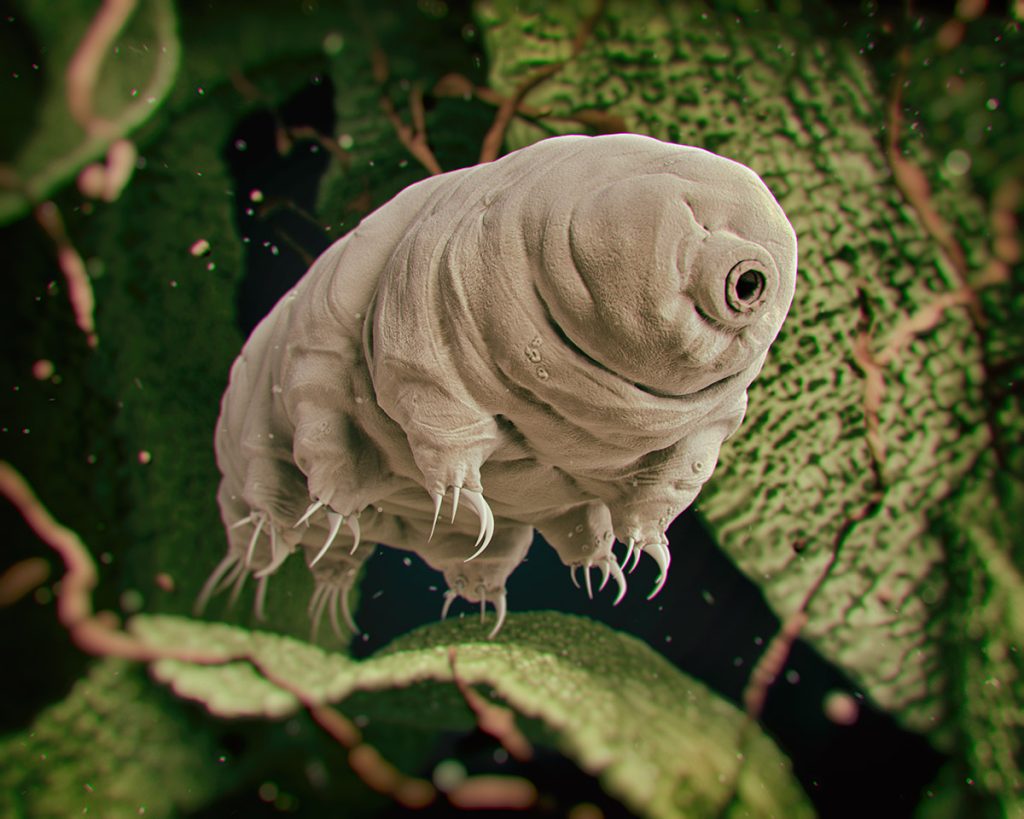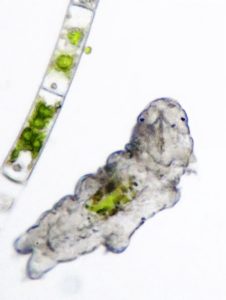
UNC-Chapel Hill researchers have discovered that tardigrades – microscopic animals famed for surviving harsh extremes – have an unusual response to radiation.
Led by UNC-Chapel Hill researcher Bob Goldstein’s lab, the new research paper published on April 12 in Current Biology reveals new details on tardigrades’ responses to radiation. Radiation has long been known to damage DNA, and in humans, DNA damage from excessive radiation exposure can lead to diseases. But the tardigrades have an unexpected way to correct the damage.

“What we saw surprised us,” said Goldstein, James L. Peacock III Distinguished Professor in the department of biology in UNC’s College of Arts and Sciences. “The tardigrades are doing something we hadn’t expected.”
Goldstein’s lab has developed lab methods for studying tardigrades for the past 25 years. The lab has identified several tricks that tardigrades have for surviving conditions that would be life-threatening for humans and most animals.
Sixty years ago, researchers discovered that tardigrades could survive about 1000 times more intense radiation than humans are known to survive. Courtney Clark-Hachtel, a former postdoctoral scholar in the lab joined the group to examine how tardigrades can survive intense radiation. She found that a species of tardigrade is not immune to DNA damage – irradiation does damage their DNA – but the tardigrades can repair extensive damage.
Clark-Hachtel and Goldstein were surprised to find that tardigrades can increase the volume of production from DNA repair genes. Unlike humans, tardigrades can ramp up the level of DNA repair genes’ products to such an extreme extent that they become some of the most abundant gene products in animals.

“These animals are mounting an incredible response to radiation, and that seems to be a secret to their extreme survival abilities,” said Clark-Hachtel. “What we are learning about how tardigrades overcome radiation stress can lead to new ideas about how we might try to protect other animals and microorganisms from damaging radiation.”
As the UNC-Chapel Hill scientists completed the work, researchers in France found similar results in independent experiments. Museum of Natural History Paris researchers Jean-Paul Concordet and Anne de Cian and their coworkers also found a new tardigrade protein that could protect DNA. Their results are reported in the journal eLife.
“We were thrilled to see that each lab’s results could independently confirm each other,” Goldstein adds.
